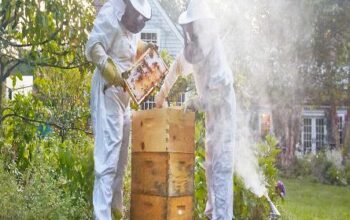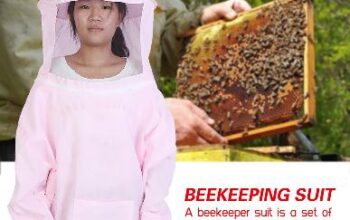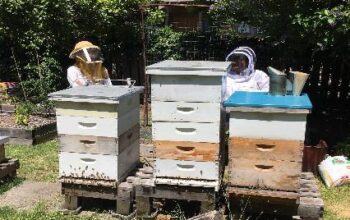
As we’ve ridden the wave of the past decade, many have dipped their toes into the fertile soil of homegrown organic produce. This venture provides a tasteful, affordable supplement to our meals for some, while for others, the sheer ecstasy of cultivating a vibrant green plant is reward enough. Of course, the skyrocketing demand for pesticide-free veggies certainly sweetens the deal – who doesn’t like a profitable hobby?
However, for the more adventurous among us, the allure of growing a tomato or two pales in comparison to the thrill of establishing an apiary – a sanctuary for bees to make sweet, sweet honey, either for personal consumption or for the hustling market.
But let’s not sugarcoat it, beekeeping for novices can come with its fair share of hiccups. After all, bees are not your typical houseplants; they need a pristine environment and a dedicated keeper who’s as committed to their welfare as to a Netflix marathon.
If you’re ready to brave the buzzing world of beekeeping, here are some helpful hints and tips to ensure your bee-related endeavors are more successful than a bear at a honey factory – whether it’s for fun, profit, or a bit of both.
The first obstacle to overcome is the all-important task of sourcing your bees. Here’s a tip: a butterfly net and good intentions aren’t going to fly with these guys. Your local Beekeeping Association is a terrific starting point. You could attempt to find and gather a hive yourself, but unless you’re a ninja in beekeeper’s clothing, it’s best left to the pros. Especially if you stumble upon Africanized Honeybees, the infamous ‘Killer Bees’, you might find yourself in a buzz-kill situation. Let’s just say there’s a reason these guys made it across the Mexican border in 1990 and have been a headliner ever since.
Next, you’ll need to decide on the hive system that best suits your needs. You’ve got two major contenders: the Langstroth hive, which is like a bee condo with hives stacked one on top of the other, and the ‘top-bar hive’ system, which is more of a bee bungalow with a horizontal setup. Each system facilitates easy comb removal and honey harvesting without damaging the hive. Most beekeepers prefer the Langstroth arrangement – bees seem to enjoy vertical living just like city folks.
Now, time to get your hands on the specialized tools of the trade. You’ll need an all-powerful smoker (not for you, but for the bees), supplies to keep it running smoothly, and assurance that the smoke won’t send your bees packing. And don’t forget the beekeeper’s fashion statement: a protective ‘bee suit’ complete with a veil and hat. There’s also a plethora of books and websites ready to swarm you with information on beginner beekeeping.
If you’re ever in doubt about your new hobby, don’t hesitate to buzz the experts – your local beekeeping association is a hive of knowledge. Remember, if your planned bees are enjoying their unspoiled environment, chances are that wild bees will too. If you unexpectedly find yourself with an Airbnb for bees on your property, let a professional bee removal service handle it. After all, your focus should be on making honey, not making trips to the emergency room!


